Last Updated on October 28, 2024 by Ellen
Editor’s note: This post is for budget slow travelers who visit countries on tourist visas. Please read our ‘visa’ section below for further elaboration.
Do you have a small retirement budget? No problem – if you are willing to live in foreign countries. Through real-life experience, we have identified the best places to retire in the world on small budgets, such as Lean FIRE or social security.
We are talking dreamy, exotic locations for under $1,500 in monthly living expenses. These are cheap vacation hot spots — by American standards.
You can live well in these places. We do it! And we know others who do it, too.
Best places to retire in the world on social security
Monthly expenses: $1,200 – $1,658
We met up with a fellow vagabond traveler whom we first met in Mexico in 2017. This time, our paths crossed in Bohol, Philippines. It was fun to catch up over dinner and have a few drinks and laughs.
In the course of our conversation, our friend related that he continues to live – and enjoy life – on a monthly U.S. social security check of around $1,200. That’s all! (That’s much lower than the average social security monthly benefit check of $1,658.)
We remember some discussion of his tight budget during our first meeting years ago. At that time, we doubted he could sustain himself on such a small amount.
But since then, we’ve come to realize: an ongoing comfortable life in enjoyable foreign lands is attainable – and sustainable – even on a very small budget.
In fact, we’ve proven it!
- How we arrived at this list
- Some qualifiers
- 1. The Philippines
- 2. Tulum, Mexico
- 3. Oaxaca de Juarez, Mexico
- 4. Puerto Escondido, Oaxaca, Mexico
- 5. Mazatlan, Mexico
- 6. Lake Atitlán, Guatemala
- 7. Athens, Greece
- 8. Lisbon, Portugal
- 9. Penang Island, Malaysia
- 10. Nha Trang, Vietnam
- 11. Chiang Mai, Thailand
- 12. Bali, Indonesia
- Expenses we have omitted
- A few more ways to cut your expenses
- Last suggestion on the best places in the world to retire on social security
How we arrived at this list
As early retired budget travelers since 2015, we have stayed at more than 100 different international destinations. Thirty of those stays have been a month or longer in duration.
As a result of those experiences, we know what makes any given location a more appealing value than another.
There have been months in Europe when we spent more than $4,000 in total to live — similar to many monthly U.S. budgets. But that wasn’t the norm, and most of our stays have been in desirable, developing-world locations; beaches, mountains, lake sides, bustling big cities, authentic neighborhoods.
And in those places, we found out first hand it is possible to explore and enjoy an exotic foreign location long term for between $1,200 and $1,500 monthly as a couple.
Some qualifiers
Budgets are relative
Personal budgets are relative and financial circumstances vary for everyone.
But it’s safe to say that we all strive to get the most pleasant and satisfying experience for the least amount of money possible in all aspects of life: the best bang for your buck.
Further, we can probably agree that it is possible to live on very little money anywhere on the planet. For better or worse, many people camp in parks and under bridges and panhandle daily in beautiful places like Southern California.
Similarly, one could always go some distance into the rural county side outside expensive world capitals like New York, Paris, Bangkok, or Tokyo, and likely find some farmer’s shack to rent at very low cost.
Finally, even in high-priced urban centers, cheap tenement rooms can be found to provide a roof and a bed and some modest measure of human comfort.
Of course, none of those options makes for a very appealing long-term existence or retirement. Nobody dreams of being a homeless beggar or itinerant farmer no matter how low the expenses.
In fact, our friend in the Philippines lives alone in a small bamboo cottage with a shared bathroom. It costs $8 per day. But it’s not an ideal situation for most Americans — or us.
We looked at far more than affordable prices to make this list of 12 best places to retire on social security or small budgets overseas.
Here are our qualifications for naming a monthly rental stay as an outstanding bargain.
Location
As mentioned above, rents can be very cheap in places where no one wants to be. But we’re not interested in staying in remote rural areas or potentially dangerous inner-city spots.
When we choose to live somewhere, we want to readily experience the best aspects of the place — and the real local flavor. So our monthly accommodations and dining and activities are usually centered where the ‘action’ is, or very close by.
Transportation
We use public transport or Uber, or occasionally rent bicycles or motor scooters (never cars). When we rent monthly accommodations, we check to make sure some form of low-cost transportation is within reasonable walking distance. We also walk a lot.
Thankfully, away from U.S., the world still caters to people who do not own automobiles.
The rental space itself
We do require average modern comforts: a clean bathroom with functioning plumbing, a food prep/kitchen area, decent furnishings – including a comfortable bed, bedroom air conditioning in the tropics, reliable internet, and utilities included.
These basic amenities are commonly found in Airbnb rentals worldwide.
Further, we typically only rent places with a real bedroom – not one-room studio set-ups. When constantly traveling and spending all your time with one other person, a separate bedroom can provide a measure of private space when desired.
Those who find a studio unit acceptable can save money on rent.
Since we started our global wandering in 2015, we’ve had no problem finding many suitable monthly Airbnb rentals between $300 – $600 per month. Undoubtedly, a tenant staying longer could arrange an even better price with a landlord.
English
Although we never expect people in foreign nations to speak our language, it sure is nice and convenient when they do. Indeed, we often feel fortunate that English is the ‘default’ language the world over.
Being unable to communicate except by hand gestures and charades can be fun for a while. But we have found living long term in places where basic communication is a struggle — can be frustrating. This is why we give language some weight in considering the best places to retire on social security or small budgets abroad.
Companionship
Similar to language, while total immersion in a new and different culture can be intoxicating, it is also nice to have some friends, acquaintances, and things in common with people like you — religion, politics, sport, hobbies, vices.
There are very few people to drink beer with in some Muslim or Buddhist countries — only tea.
Health care
Less a consideration for a month-long stay, but important for fellow vagabonds who stay longer or who have ongoing health issues: easy access to good quality health services – in your language.
This can be a huge factor in enjoying and thriving in a foreign location.
Area amenities
Anywhere we want to stay for a spell must have a modicum of western conveniences: a good grocery, coffee, some dining choices, a pharmacy, laundry, etc.
It’s also helpful to have airports, immigration and visa offices, and security or police nearby – just in case.
And finally, we prefer a beach or waterfront or lake — some body of water around, to enjoy and admire and remind us we are retired.
With these points in mind…
Using the above considerations, in addition to price, we have identified one dozen delightful locations from around the globe where life or retirement on a small budget is not just barely possible, but positively pleasant.
12 best places to retire in the world on social security – or small budgets
1. The Philippines
Our friend in the Philippines lives on the island of Panglao. It has beautiful beaches, lots of tourists and English, amenities, transport options, a brand new international airport spurring more development — and still some cheap accommodations available.
But Panglao is just one of 7,100-plus Philippine islands. Many of them are even more affordable.
As I write this, we are spending $350 for a month-long, one-bedroom, mountainside apartment rental near Dumaguete City on Negros Island, with views and many comforts, and a tasty, cheap, western food restaurant on site.
A beautiful, spacious, previous rental on Cebu Island north of Cebu City was under $500 per month. Here’s a video tour of that apartment.
In all, we’ve now been in the Philippines for three months, and I can say with confidence – you can live very nicely in many places here for $1,200 per month.
Downsides to the Philippines
- The visa policy is a hassle and relatively expensive, compared to other countries.
- Local food is cheap and plentiful, but western favorites can be hard to find.
- Quality healthcare is limited to the crowded, polluted, large cities.
Don’t miss: Top 10 reasons to love Filipino people and the Philippines.
2. Tulum, Mexico
The cheapest month we ever recorded was back at the beginning of our ‘vagabonding’ experience. In fact, my wife Ellen lived alone in Tulum, Mexico, for several months in 2015 just before I retired and joined her to start our ongoing international wandering.
She lived in the town of Tulum, five miles inland from the stunning and boutique hotel-covered beach. And she lived comfortably for around $900 per month!
Granted, Tulum town living is quite modest (lots of dogs, roosters, dust, and garbage collection issues) compared to the famous tourist beach. Also, she does not drink alcohol, and by herself, she did rent a studio apartment with electric (including air conditioning) billed separately.
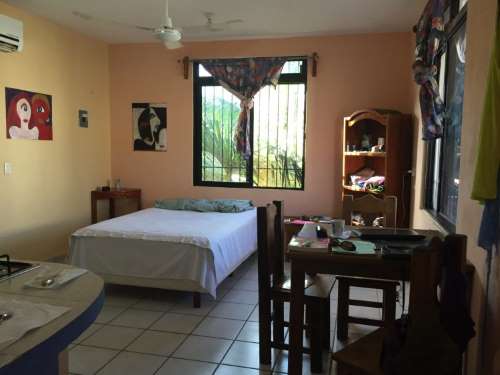
Still, she enjoyed the magnificent free beach each day (bought a bicycle to get there), ate at cheap in-town restaurants, shopped at the Chedraui Superstore (like Walmart), made new friends, received massages and Spanish lessons, and visited nearby Playa del Carmen weekly — all on $900.
Perfect practice for our future years of vagabonding.
Downsides to living in Tulum
- Tulum has a constant tourist vibe and economy.
- It has blazing hot summers with intense downpours that can last days.
- It’s in a hurricane zone.
- Decent healthcare is a 45-minute drive to Playa or three hours to Cancun.
Check yourself: Is an endless travel itinerary right for you? There’s a way to test it.
3. Oaxaca de Juarez, Mexico
The only other time we rented a studio apartment for a month or longer stay was in Oaxaca de Juarez, or Oaxaca City, Mexico.
Our planned rental had unexpectedly cancelled and we grabbed a second story, fan only, central city unit at the last minute for $295 per month on Airbnb.
Our total expenses for that month in the southern Mexican state capital: $1127! No doubt, our studio experience could be duplicated today.
Located at 5,000 feet in the Sierra Madre mountains, Oaxaca is a famed silver producing, colonial city with a rich native history, temperate, breezy climate, decent public bus system, and a smattering of American and Canadian expats. There are ruins and natural wonders and Spanish remnants around the area.
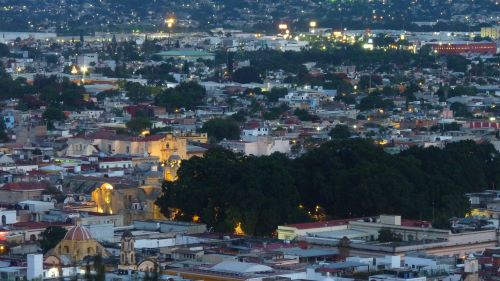
Downsides to Oaxaca City
- English is not very common.
- Healthcare is not top class.
- Inconvenient public strikes are commonplace as the workforce seems ever angry with federal leadership in Mexico City.
- Airline service is infrequent.
- No waterfront is close.
Don’t miss: 4 useful tips for Hierve el Agua.
4. Puerto Escondido, Oaxaca, Mexico
Speaking of Oaxaca, another affordable city, this one with an incredible waterfront and beaches, is Puerto Escondido. The surf mecca is several hours by car or bus on a winding mountainous road southwest of the capital.
Our total monthly spending in Puerto Escondido: $1417, including $480 for a one-bedroom apartment about 10-minutes walk from the beaches. Rents are more expensive closer to the action.
Puerto, as the locals call it, is a small city focused on the beaches and sea.
The huge, famous, entertaining Zicatela Beach features the largest waves in Mexico and attracts surfers from the world over, including the annual professional tour stop.

Numerous other beautiful and safer swimming beaches dot the stunning, jagged, Pacific coastline, too.
A good number of Canadian and American retirees call Puerto home – at least part time. And there are plenty of conveniences.
Downsides to Puerto Escondido
- English is not widespread.
- Healthcare is second rate.
- There is some simmering anti-government feeling and local political conflict, too.
- Public transport is spotty, airline service is minimal.
Don’t surf? Don’t worry: Puerto Escondido for non-surfers on a budget.
5. Mazatlan, Mexico
The final Mexican destination that makes our list for best places to retire on social security overseas is Mazatlan, Sinaloa.
Over the course of two years, we stayed in Mexican cities up and down both coasts. Often overlooked in favor of Puerto Vallarta, Mazatlan is probably our favorite Mexican place when it comes to overall livability and cost. One month: $1,390 total.
Unlike many Mexican beach towns, Mazatlan is not simply a tourist destination. It is home to the second-largest fishing fleet in Mexico, a busy shipping and cruise port, the Pacifico Brewery, and other industry.
It’s a real, hard-working Mexican community — and it also has a huge and diverse tourist zone along its stunning coast.
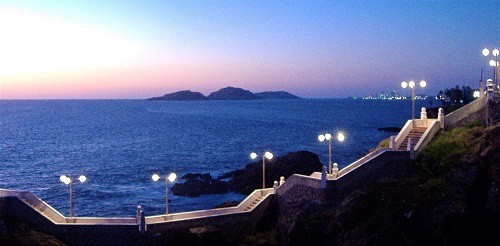
It’s also known as a center of the drug trade. But, unless you are seeking drugs, the cartels don’t want any bother with you.
Enjoy the beaches, the fantastic weather, the incredible seafood, good healthcare, many transport options, all conveniences available, and the many expats that reside there and are catered to — at very reasonable prices.
Our two-bedroom, older-style beachfront condo cost $530 per month.
Units away from the waterfront, or smaller, or in the city center, can be even cheaper.
We miss Mazatlan; the music, the food, the friends, the endless waterfront walkway, the beach life on the cheap.
Downsides of Mazatlan
- Occasional drug violence.
- Inconvenient airline connections.
- Hurricane potential.
Retirement checklist: This is what brings expats to Mazatlan, Mexico.
6. Lake Atitlán, Guatemala
We stayed for nearly two months on the steep volcanic slopes surrounding Lake Atitlán, about 35 miles north of Antigua, Guatemala. It is one of the most scenic places on the planet.
Unfortunately, as with many inland lakes worldwide, pollution from human, animal and agricultural sources is poisoning the 1,000 foot deep, 50 square mile, volcano-crater lake.
Our total spending during the month we rented a small, one-bedroom cottage in the Mayan village of San Pablo: $1,362. Take a video tour below.
San Pablo is one of a dozen recognized Atitlán shoreline villages, and one with few tourists.
A good number of North Americans take advantage of Atitlán’s beauty and low prices. Most live in the bigger towns of San Pedro and Panajachel where transport, tourists, banks, bars, and conveniences are found.
Downsides of Atitlán
- Most of the area could be described as ‘rustic’.
- Transportation to and around the lake is slow, confusing, and can be expensive.
- Medical care is best received three hours away in Guatemala City.
- Local native languages flourish – English and Spanish; much less.
- Human activity/tourists are destroying this incredible place.
Don’t miss: Lake Atitlan: Majestic, mysterious, mortal.
7. Athens, Greece
We spent nearly a year on the European continent. Most of the famous, old-world cities don’t come close to any definition of ‘budget’.
But our month-long, one bedroom, apartment rental in a decent central Athens neighborhood cost just $560.
Our total spend for a 30-day stay: $1,400!
We worked as volunteers at a refugee camp during the month, which did crimp our touring and spending. But we also found time to take in all the amazing ruins and culture and food and nearby beaches.

The place is cheap and unique and cosmopolitan, with good healthcare, transport, conveniences, and it’s always loaded with tourists and excitement.
Currently, it has to be one of the best bargains of major world capitals.
Downsides of Athens
- The Greek economy has been struggling for years.
- Greece is part of the Schengen visa zone, a consideration for monthly travelers like us.
- There is a palatable discontent with government and the European Union.
Watch out for pickpockets in Athens. They got us using the old ‘blockade’ trick.
8. Lisbon, Portugal
Living in Lisbon on less than $1,500 is difficult.
Our one month of living expenses totaled $1,977 — but we paid $1,000 in rent in the heavily touristed Alfama district. And, we were not super budget focused.
Lisbon is without a doubt one of the least expensive European capitals. But some costs could have been shaved down.
Indeed, a quick check of current Airbnb listings shows some monthly rentals from $600 to $800 (most are priced much higher).
Aside from rent, there are good deals on public transit passes, frequent ‘free’ museum days and music performances, endless public parks and markets and art and churches, and cheap neighborhood coffee and pastry shops everywhere.

Downsides to Lisbon
- Schengen zone visa rules.
- Tourist prices in tourist areas.
- Heating/cooling/plumbing can be sub par.
Be informed: Free museum days in Lisbon.
9. Penang Island, Malaysia
We spent several months of 2019 in Malaysia. One of our favorite stays was in the historic, tropical city of George Town, on Penang Island.
In truth, it felt the most like America out of anywhere on this list – perhaps because Penang was a British outpost since the 1780s. Everyone speaks some English. Medical facilities are world-class.
The rent for our nice, furnished, three-bedroom condominium, including all utilities, satellite TV, and fast internet was $580 per month. Total month’s outlay: $1,469.
Within walking distance were four different new malls that offered everything you could dream of at all price points, and restaurants of every quality – from super cheap ‘hawker centers’ to mid-level diners, to five-star fine cuisine. We paid under $3 for most meals.
Beaches, parks, mountains, waterfront development, China town, an excellent public bus system, Uber/Grab, Buddhist and Hindu temples, Muslim mosques, Christian churches, more malls, a major airport; it all exists peacefully on Penang Island.
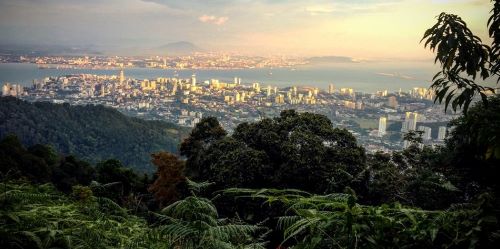
Many foreigners call the George Town area home. Condominiums are everywhere. It’s a booming modern Asian center with charm and tradition and culture.
A great place to relax and recharge after touring more ‘difficult’ areas of Southeast Asia. Very safe, welcoming, livable. Ninety days free visa on arrival. A truly international vibe and flavor.
Downsides to Penang
- Too much traffic, noise, development, malls – feels like Myrtle Beach.
- Many Starbucks. Many tourists.
- Mosques blast loud prayer calls at 5:30 a.m.
Save money: 11+ things to do in Penang on a budget.
10. Nha Trang, Vietnam
Known as Vietnam’s original beach town, Nha Trang and the surrounding areas are beautiful – and growing fast.
Best of all, prices can be really low if you avoid the tourist zones. Our comfy two-bedroom, waterfront apartment was $500 per month. Total monthly expenses: $1,418.
The local people are super friendly.
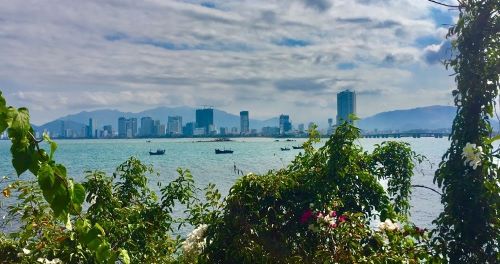
I mentioned ‘difficult’ SE Asian places above. Some travelers might say Nha Trang is one of those. The reasons why follow.
Downsides of Nha Trang
- Very little English is spoken. (In fact, the place caters to Chinese, and surprisingly, Russian tourists.)
- Health care in Vietnam is not yet top class.
- Understand and follow Vietnam visa policy in advance.
- A great place, but western expectations can bring disappointment.
Authentic travel: Nha Trang spots away from tourist mobs.
11. Chiang Mai, Thailand
Northern Thailand is an enchanting place, and Chiang Mai is the most popular northern Thai city.
It’s actually a mesmerizing dichotomy: old and new, ancient temples, modern universities and malls, walled historic central city, urban sprawl, mountains, waterfalls, nature, noisy, heavy traffic.
Studio apartments are most common, but our nice one bedroom cost only $445 per month. Our total monthly spend: $1,376.
Many cheap, delicious Thai and international food options are available. Health care is very good. Many American expats call Chiang Mai home.

Buses, Uber/Grab, taxis are cheap. Chiang Mai offers easy access to northern Thailand. Low Asian airfares are common from CNX airport, handy for necessary visa runs.
New: Grocery prices in Thailand in 2022.
Downsides of Chiang Mai
- Not a lot of English is spoken.
- Urban sprawl.
- Noisy, heavy traffic.
Don’t miss: Cosmetic procedure in Chiang Mai — V-beam
12. Bali, Indonesia
Bali has been the Australian beach getaway spot for decades. The allure of its beaches and rice-patty mountains and mysterious Hindu temples now brings scads of tourists from everywhere.
The heavy tourist zones around world-class beach areas are often overrun with Aussie partiers or digital nomads looking for Instagram fame. But the island is huge and many secluded options exist.
Prices are quite reasonable everywhere except for the most high-end resorts.
Our month-long stay on the north shore in Lovina cost $480 for a small private guest house with pool. Total spend was $1,398.
Cheap local family restaurants (warungs), beaches, diving, waterfalls, scooter rentals are everywhere.
Many Aussie expats and others reside in Bali, including Americans. It’s clear they’ve identified this Indonesian island as one of he best places to retire on social security – or small budgets.
English is common.
Downsides of Bali
- Visa policy is a pain.
- Transport options and costs vary widely – negotiate!
- Indonesia is not known for health care.
Guest post: The real Ubud (by our friend Chuck).
Final points: 12 best places to retire in the world on social security
For the record, as early retired global nomads, we are religious about keeping track of every penny.
Each morning we enter the previous day’s expenses into the handy Spending Tracker smart phone app. The expense totals given here are taken directly from those meticulous records — with a few exceptions.
Expenses we have omitted
The cost of getting there
First, the expense of travel to and from any of the mentioned destinations has been omitted.
For purposes of this article, we are focusing on the true long-term costs to live in these places. Someone on a tight budget would not likely be jetting around to other locations.
Still, while actual travel expenses may only come into play occasionally for someone who relocates, they can never truly be excluded. An unexpected circumstance could require a return to the U.S. at any moment: a funeral, family emergency, health event.
And those likely to return frequently would be wise to stay where shorter/cheaper flights are available.
Fly discount airlines: 3 Mexican airlines reviewed and 2 Asian airlines reviewed.
Our big, personal health care expenses
We have had significant specialized health care outlays in different places around the world. But those expenses are unique to us, so they have been deleted. (But note, we have shared them in our personal monthly expense reports, and we have been open about what it cost to treat Ellen’s early stage breast cancer abroad.)
Normal, regular, routine health care expenses – like dental cleanings, occasional doctor exams, treatments and medicines – are included in all totals for this list of the 12 best places to retire on social security or small budgets overseas.
Family gifts, donations, our taxes
Other personal types of expenses have also been subtracted: gifts to family, charitable donations, a spiritual retreat, our U.S. taxes.
All other normal travel, life expenditures and purchases including clothing, shoes, all food and lodging, immigration fees, local transportation, supplies, etc., are reflected in the totals.
As a reminder, all expenses in these examples are for a couple, husband and wife, traveling together — except the Tulum experience.
Visas
Visa considerations should be an area of attention for anyone planning any extended time abroad. All our travel has been done using standard tourist visas.
But anyone who wants to spend extended periods in a foreign nation should check that country’s immigration website. Do that to understand all visa regulations, options, and costs – which can be serious and cumbersome, especially outside the Americas.
Be aware: Odd visa policies in Southeast Asia for Americans.
A few more ways to cut your expenses
Alcohol and western food brands
Ellen does not drink alcohol. And I only drink beer, usually in moderation. Travelers who like to imbibe or who require imported wines or liquor could increase costs significantly.
Similarly, the prices we pay as we travel are reasonable and customary for the product or service at that particular place. Those who desire American brands or service levels will undoubtedly pay more.
Quench your thirst: Southeast Asian cheap beer report.
Housing
Finally, there are ways to lower monthly outflows even further. Our low expenses are still higher than what a true resident would likely face.
As mentioned, renting a studio apartment in a location outside of tourist areas would be one way to cut your housing cost. And dealing directly with a local landlord under traditional lease terms could result in savings as well.
Still, Airbnb units are furnished and include utility services – a true convenience when negotiating a strange language and culture.
Intrigued by monthly rentals in foreign lands? We explain how to live continuously in Airbnb rentals.
Last suggestion on the best places in the world to retire on social security
To anyone using these expense figures in travel or retirement planning — always have surplus funds (and/or high limit credit cards).
We advise allowing 20 to 25 percent more (at a minimum) than whatever budget amount is expected. Travel insurance is a good idea, too.
Unforeseen events – good and bad – can and do occur. Illness, accidents, emergency trips home, amazing opportunities, a chance to help someone. These are all things that can bruise or bust a budget.
Best to be ready… and be able to continue to get the best bang for your travel buck.
As always, be thankful and generous, happy trails, and more beer.
Life is now!
Thanks for reading, “Best places in the world to retire on social security.”
You might also like to see some of our monthly expense reports — with nothing held back.

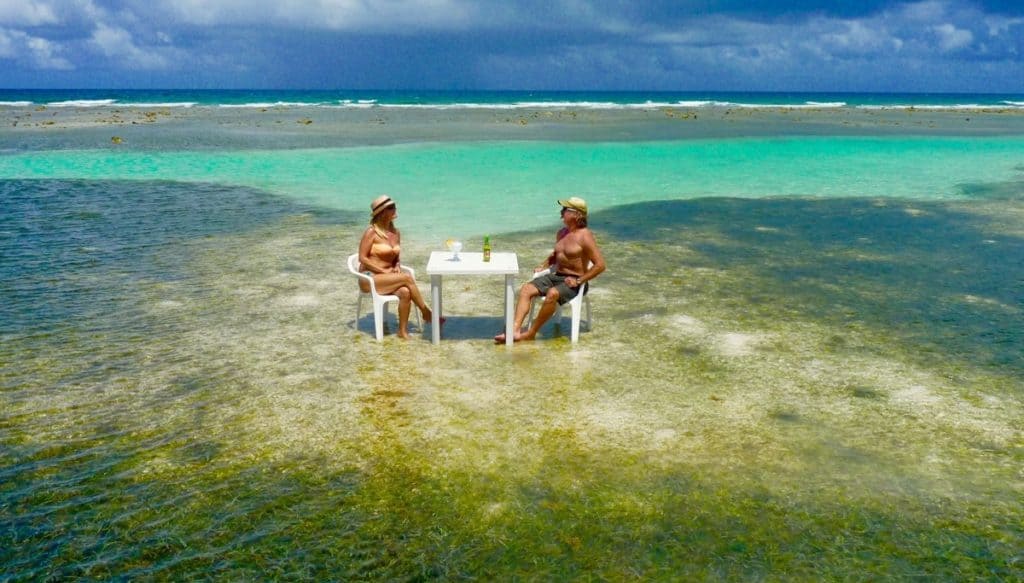
This list doesn’t take into consideration the fact that in order to retire somewhere, you have to comply with Residency rules. Several of these places are cheap to live in but have very high income requirements! Mexico now requires a monthly income of over $4000 a month! Greece requires a bank deposit of around $50,000 USD. I retired to Albania, one of the safest countries in the world. Easy Pensioner Residency and an income of about $1000 a month required. I live in an oceanfront apartment on $800 a month which includes health insurance and meals in restaurants twuce a week. They don’t allow GMO foods so the food is way healthier than in the US.
Hi Janis, thanks for writing. Perhaps you missed the ‘visa’ section on that long post.
It says:
Visas
Visa considerations should be an area of attention for anyone planning any extended time abroad. All our travel has been done using standard tourist visas.
But anyone who wants to spend extended periods in a foreign nation should check that country’s immigration website. Do that to understand all visa regulations, options, and costs – which can be serious and cumbersome, especially outside the Americas.
That said, if you missed our visa section, perhaps others might, and so we have added an editor’s note pointing out this section at the top of the post.
Enjoy your retirement in Albania! We have fond memories of our time in Tirana and along the coast.
Best regards,
Ellen